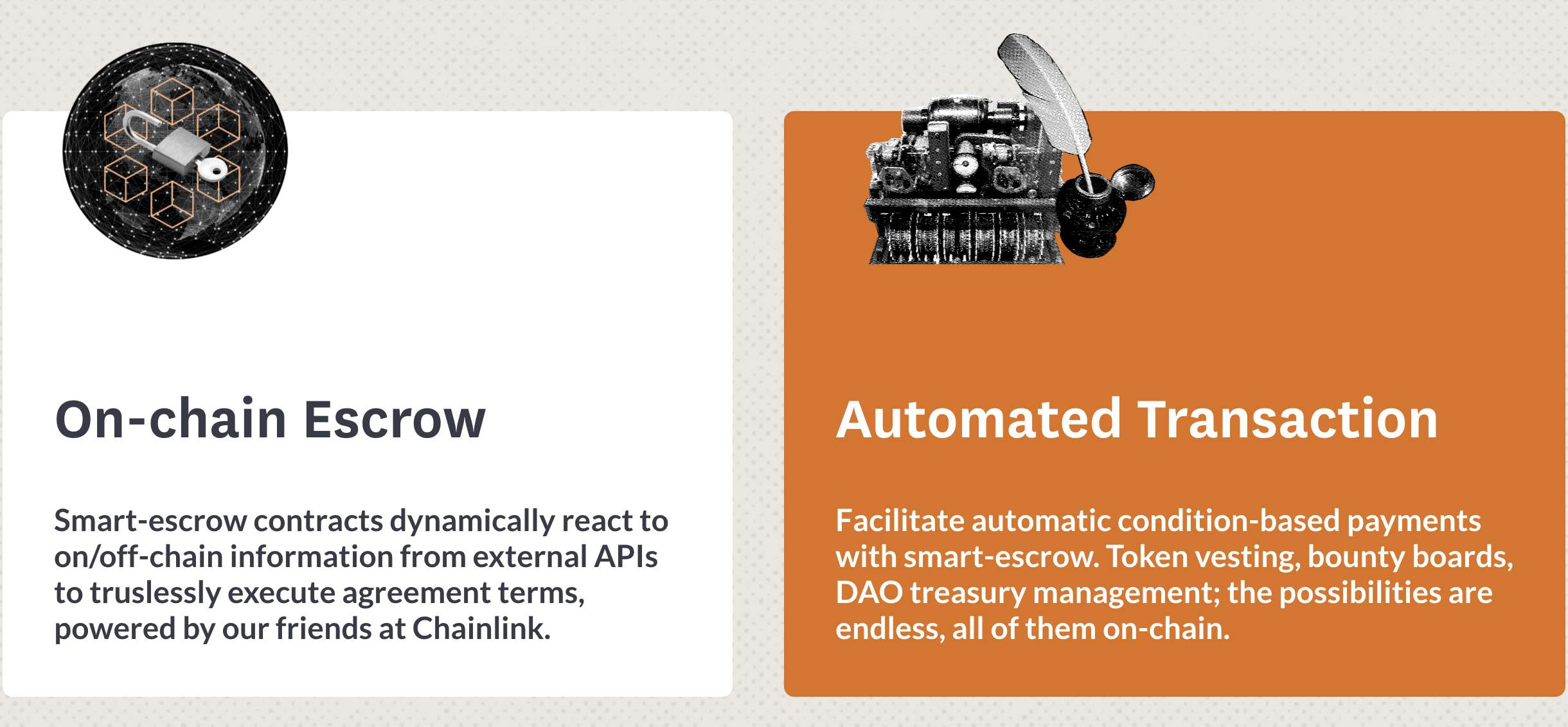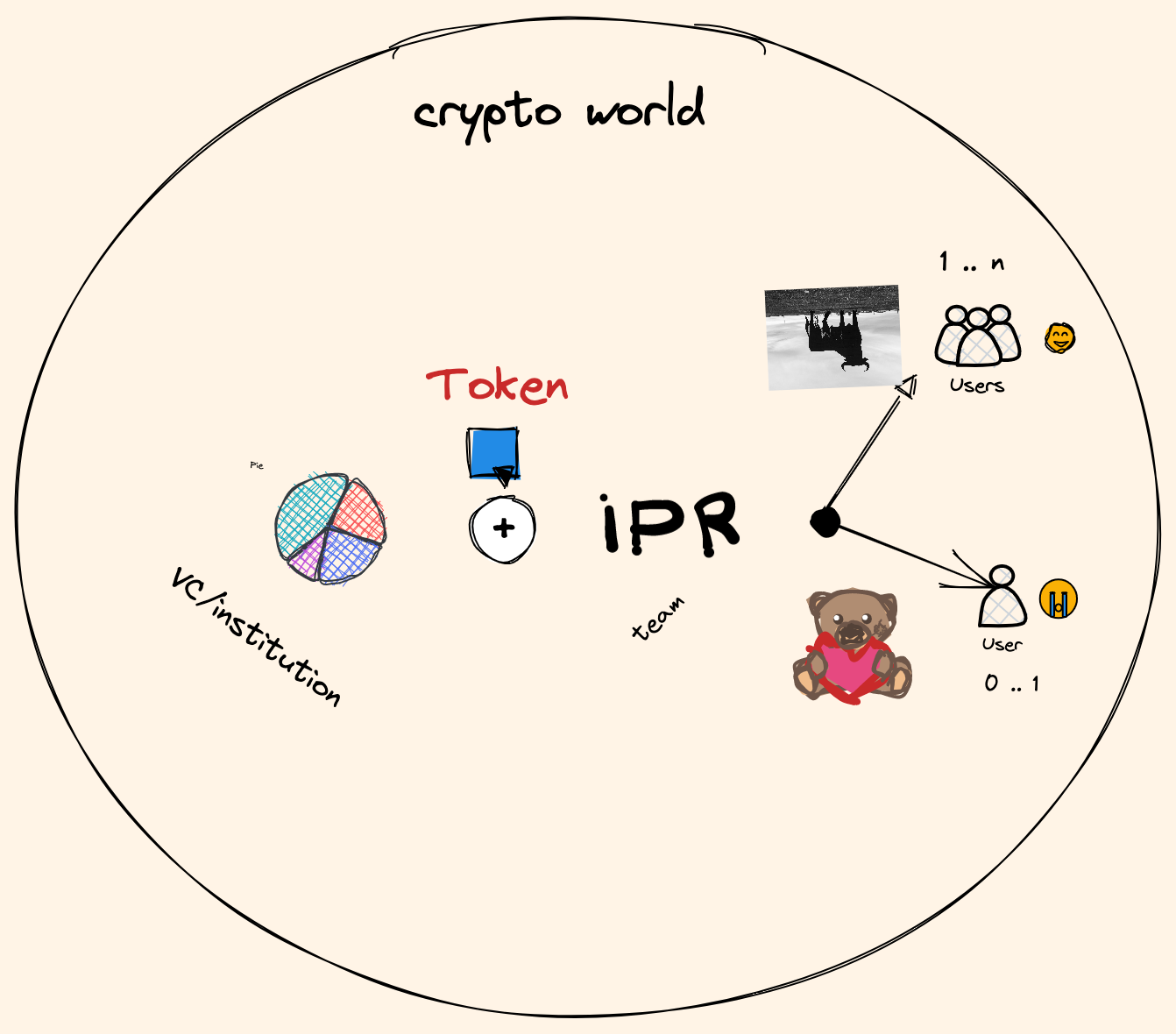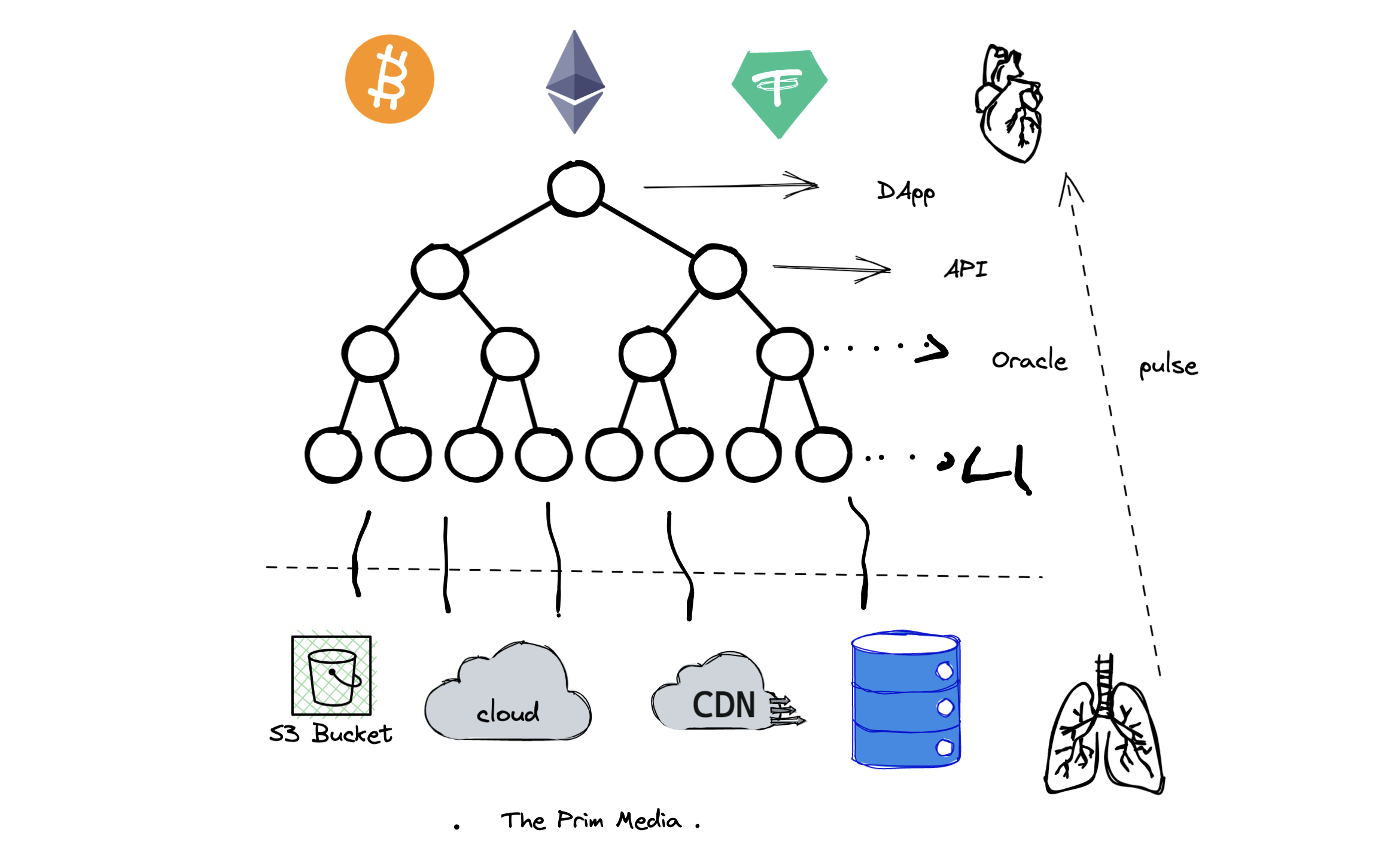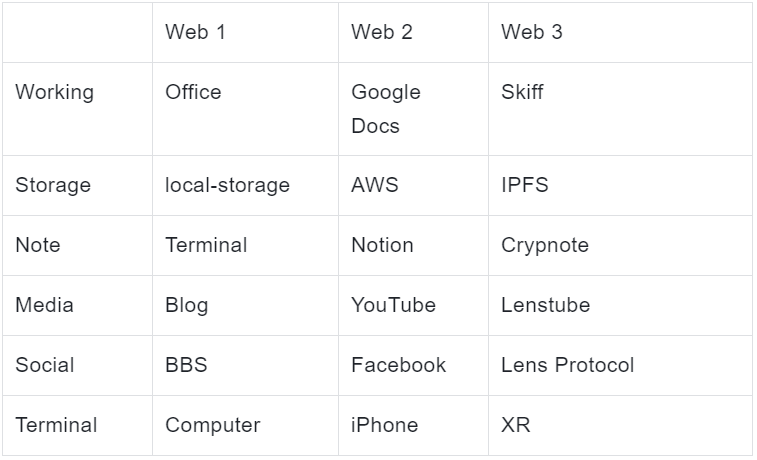Author | Spike;
Editor | Jerry Crypto;
Copyright | ThePrimedia
Editor's note:
There is an old Chinese saying, "The fish is what I want while the bear's paw is also what I want. You can't have it both ways, Mencius said.
In the world of Web 3.0, decentralized technology is what the public wants while practical applications are also what the public wants. You can't have it both ways.
This article will attempt to analyze the gap between Web3 and the ecological construction in real life, and on this basis will explore the path to breakthrough. The whole article will be divided into two chapters:
1. Paradox: analyzing the "Web3 Paradox", finding its mechanism and the path to breakthrough.
2. Broken: analyzing the "Web3 Paradox", finding its mechanism and the path to breakthrough.
Part 1: Paradox
In the midst of the Web 3.0 concept wave, a series of creative DAPPs have taken root and sprouted up, nourished by the idea of decentralization.
- NFT
- DEX Uniswap
- Compound、Maker、Aave
- USDC、DAI
- Filecoin
- Lab DAO
- Toucan
- Golden
- Radicle
- Helium
- ……
However, after a few years of development, the picture we see is of CloudFlare crashing, the Oracle stopping working and exchanges failing to match ...... most projects dead.
Why can't decentralized underlying architecture support application scenarios that meet the public?Why can't blockchain concepts give birth to top applications like Twitter and Facebook?Why does the crypto world concerned with user privacy fail to deliver a smooth user experience?Why can't Web 3.0 applications form a flywheel effect and roll forward?
Despite all these questions, the reality is that hardly anyone stops to think: what is the gap between the ideal decentralized design and the real-world ecological applications?
Web3 is a great and risky top-down design for social change, bringing us a grand vision of industry iteration, era change and even social evolution. As an outline of thought and action for the construction of the crypto world, Web 3.0's decentralized social concept is revolutionary, as social change in the past has often been designed from the top down and brought about constant iterations and conflicts; under the decentralized social concept, Web 3.0's social practice is presented in a bottom-up way, similar to "self-organizing" systems of ant or beehive.
In reality, however, Web 3.0 lacks the implementers and facilitators to put it into practice. While any major technology associated with social change cannot be separated from the empowerment of markets, wealth and profit, the history of the crypto world are completely penetrated by the desire for wealth, from project developers, studios and investment institutions down to speculators, holders and all other major players in the crypto ecology.
The bottom-up construction of the Web 3.0 ecosystem to support the industry iteration, the changing times and social evolution, and the game of interests in the crypto world, has brought all this into a "paradox".
VC: the invisible driver behind Web3
Building in the name of Token's hand
In the end, the existing Internet industry structure is still a linear relationship of "scale for growth and traffic for valuation"; however, Web 3.0 does not have a central carrier and cannot use the previous valuation to evaluate the input-output ratio. All business models and product designs of Web 3.0 need to be reconstructed by a non-linear relationship to break the threshold and reach a sizeable number of users. This is a model that can be likened to the human brain interlinked by various neurosynapses, ultimately producing complex thinking.
This decentralized remodeling means that the divide between individuals and businesses, and that the business value of every individual, every micro and small business, or even any social group, it can be mined (Token), transmitted (Web 3 Social), and the relationships between them can be migrated (Social Graph) and stored (IPFS).
However, there are obvious problems with Web 3.0 at this stage:
1. Lack of real needs.
Web 3.0 relies heavily on copying the ideas of Web 2.0, frequently introducing decentralized versions of centralized services, and lacking in tapping into the real needs of users. For example, we don't want a decentralized version of Twitter, we just want a social protocol that preserves social relationships, more NFTs, anti-censorship, and protects our privacy.
2. Profit-making as the first motivation for users.
Users do not use the product for the value of real scenarios, but for profit, which is why X2E and its copycat projects are proliferating. However, this model can only attract gold diggers in the start-up phase and does not leave a real user base.
If you are determined to go long on Web 3.0, you cannot see the returns without a long-term investment, or at least you need a business model to take shape before you can reap the fruits. The only time Web 3.0 will really breakthrough is when universal applications are born. But we have to accept the reality that DeFi has about 4 million users, NFT has about 500K active users in OpenSea and Web 3.0 social protocols have less than 10k users.
Why is the actual user size of Web 3 so small? The VC-facilitated Token mechanism is the reason behind it.
The logic of VCs in Web 2 was to keep investing, seeking a monopoly position in a single industry, occupying the entire market space, and continuing to make excessive profits.
The logic of VCs in Web 3 is to seek early and cheap Tokens, use the secondary market as a profit point, and use the token's listing on an exchange as a node to quickly drain the token value.
Web 3's Token mechanism becomes a reservoir for institutions and VCs, and is free from any liability. There is a buggy mechanism here that allows traditional institutions to use token attacks for arbitrage.
Why does the Token mechanism not lead to actual user scale? Someone argues that behaviors are not spontaneous under the market mechanism, but are precisely interfered with and created by human beings.
Users may indeed care about privacy and data security when using search engines, but the most important thing is to satisfy the need for a search, which is the fundamental reason why the Web 3.0 building path cannot be equated with DeFi and NFT. The value of a product's use should take precedence over the price mechanism.
For example, when using EthSign to sign a commercial contract, the most important thing is that the contract is tamper-proof, which is the core advantage of the Web 3.0 product over other tools, and the user does not need to understand what is on-chain and smart contracts means at all, but can know that it allows the contract to be archived forever.

Source: EthSign
It is well known that the market acts on the basis of maximizing individual interests, but the current market is maximizing interests through the token. Let's use a picture to see the evolutionary process under Token.

The institutions negotiate a share and the project owner is lured by the rate of return, both parties conspire to maintain the price of the token and gain more users to support the value of token in the bull market, but in a bear market, the project will face loss of both token price and users due to the lack of core users.
After the Token has been utilized, some projects will sell off together or have no choice but to keep it running. For example, Uniswap, after acquiring the NFT aggregation trading platform Genie, went so far as to use USDC as an airdrop token instead of Uni token, which can be declared the death of the governance token.
In Satoshi Nakamoto's vision, the Token is a manifestation of proof of work. But under the command of VCs, the project is for the price of the Token, and the strategy of institutions and projects against the Token is a quick exit channel rather than maintaining operational development.
Empty shells: from infrastructure to application scenarios
The empty shell structure from infrastructure to application scenarios has hollowed out the backbone of Web 3's development.
When talking about Web 3.0, we mention the social graph, the creator economy, SaaS and collaboration tools, as if Web 3.0 would quickly take over the online world as infrastructure. But in reality, nothing was there, as soon as CloudFlare crashed, the Oracle stopped working and the exchanges could not be matched......
We discovered that there were even more underlying Internet protocols under Web 3. Underneath the grand vision of Web 3.0, we can find the gap between currently the ideal and the practice, namely Web 3.0 is just an empty shell.

Web 3.0 is still the traditional infrastructure
Without a phenomenal application, the flywheel effect of Web 3.0 cannot succeed. For example, the BBS Network, which is currently a social protocol focusing on the SocialFi or social concept, will have 50% of its tokens distributed to active users. So how do you increase activity? By creating "high quality" information, of course, and with this logic, more traffic is channelled in, and active users who are followers and subscribers reap more benefits. This mechanism comes from DeFi's transaction mining, which artificially creates enough bubbles to leave nothing but a mess in the end.
At the moment, we only have Web 3.0 as a poor imitation of Web 2.0, but we need to achieve qualities such as privacy protection, data portability and social migration, which requires the involvement of blockchain, DeFi and NFT. This is the application that has real usage needs.

Why is there a lack of real demand for the Web 3.0 applications? The reason is simple: the product doesn't good. This is due to the extreme scarcity of quality developers. Web 3.0 ecosystem is ostensibly scarce in terms of users, but with tens of thousands of current Web 3.0 users, there are fewer exploratory applications and still a need for more technical, basic development tools.
The languages used by mainstream developers flocking to cash-flowing tracks like exchanges are basically Java, Go, Javascript, etc., and only in the parts involving on-chain interaction do they use Rust, solidity, etc. If they don't recognize the greatness of Web 3.0, then the blueprint goes unconstructed and never comes true.
As the bear market hits, Coinbase and Bybit will even make layoffs, and these developers will be lost again, further worsening the Web 3.0 development force. In the world of blockchain, the power of quality developers to drive new tools and technologies is huge, but the current dynamics are pushing them out of the Web 3.0 infrastructure development space. The Web 3.0 ecosystem is arguably all set, but lacking in talent.
The future: who is "glass-breaker"?
We briefly outline the relationship between Web 2.0/3.0 - and hope we can get a glimpse of the future of Web 3.0.
The underlying hardware is currently consistent: still desktop and mobile. Meta's VR devices are not directly linked to blockchain technology or games, and GameFi is still primarily web-based and client-based, but does not have extensive access to devices such as VR, a key point that has been deliberately overlooked. The VR devices are still paving a wider path of use.
The underlying protocols are diverging. The underlying network has not completely abandoned HTTP, browser, TCP/IP and other protocols, but the UX/UI is changing, and regardless of its beauty, the main orientation is "cyberpunk". In other words, the public chains as communication protocols and IPFS as databases have not completely replaced the existing communication protocols and centralised databases.
The current Web 3.0 is predominantly conceptual, that is, the Internet then evolves to Web 3.0+, and if this is the story that is bound to happen, it is fair to assume that the Web 3.0 concept as marketing itself is an extension of the real world.
The product is still in the process of iterative development: the lifecycle of Web 3.0 is no longer fixed and will enter an era full of mobility. Essentially, tickets can be used once and never used again, and marketing services can be used up as long as it lies in a consensus between the buyer and seller, and can be called Token-as-a-Service.
It just needs a process to get there. There are three main groups of people talking about Web 3.0 right now:
The first category: traditional Internet majors
Now they are jumping on the bandwagon, mainly because the traditional traffic model has come to an end and there are already people among the big Internet players who are ready to sail into a new course, but they will be like Facebook's Libra, or the so-called Consortium chain, if they don't change their thinking.
The second category: crypto native
These people either started out on public chains, such as Flow advertised itself as a Web 3 public chain, or they started out in DeFi/NFT/Metaverse project organizations, or they jumped out from traditional Internet majors and organizations to participate in the construction of Web 3. They are by far the most dominant group of people, and like the AAVE team that developed Lens Protocol, we all need to learn to embrace change.
The third category: Variants of pyramid schemes
The essence of pyramid schemes is the product model, which is not profitable in nature, and it is all based on the financing operation model of pulling in new members. These people are not genuinely interested in developing the product, but are often the most vocal and want to get as many people involved as possible, and the average person who is scammed will have the stereotype that "Web 3.0 is a scam".
Only the second group can become the mainstay, and in the future, more different types of people will enter this field and use their clever brains to create truly valuable product services and usage scenarios.
Web 3 is adapting super fast, for example, Nansen has partnered with Google Cloud to provide real-time market data. It's like joining if you can't beat it, and Web 2.0 and Web 3.0 are not isolated from each other, but more like twins. So Web 3.0 leaves time for Web 2.0 to adapt and evolve as well.
The fit that the two sides can reach is that the data will help market makers, hedge fund managers and asset managers to enhance their algorithms to predict market movements, generate reports, indicators and more. As new trends take shape, more mainstream groups will get involved, which is a good start.
Next, we will continue to talk about what the future of Web 3 products will actually look like and whether Web 3.0 products can reshape the next generation. Ultimately, the path to breaking through the Web 3.0 paradox begins with developers delivering user-ready products to the crypto ecosystem. Stay tuned for the next article.



